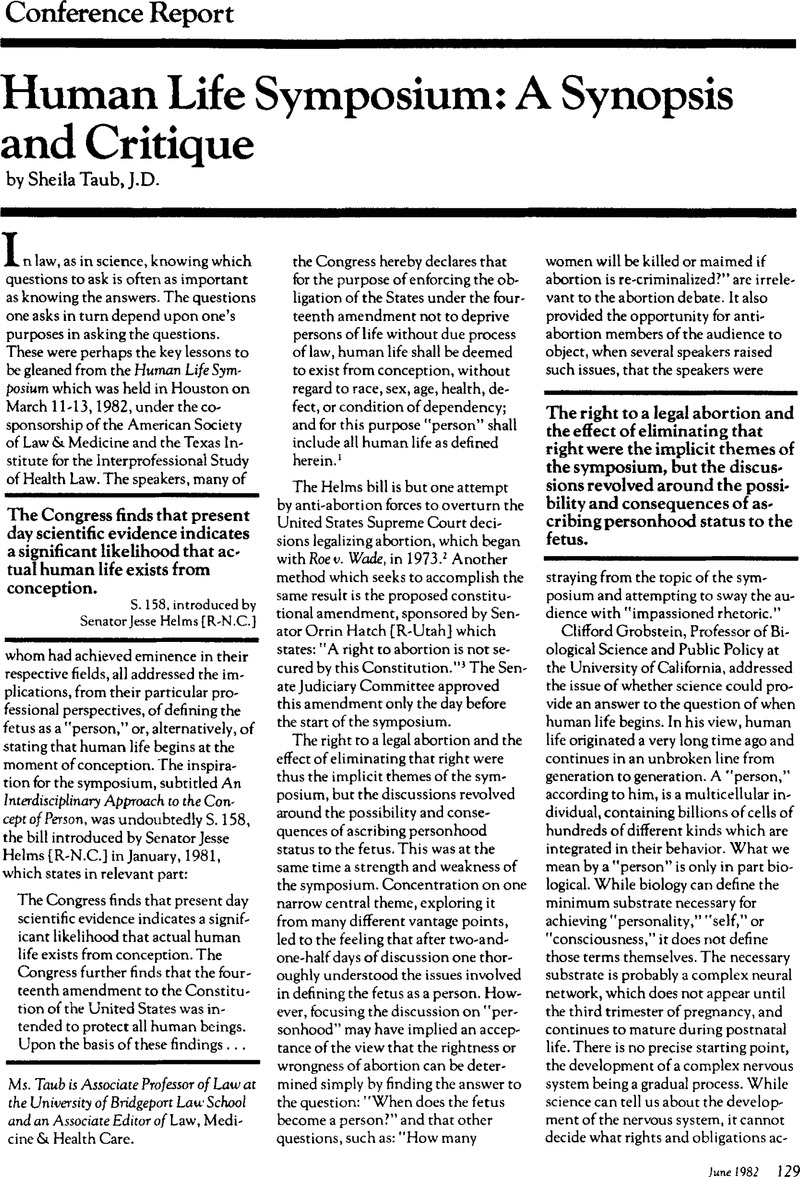C. E. Curran, Politics, Medicine, and Christian Ethics: A Dialogue With Paul Ramsey (Fortress Press, Philadelphia) (
1973) at 131: I do not find the argument from early fetal development or the existence of brain waves convincing at this time. EEG at the end of life is a test to see if there is the potentiality of life remaining in the person. It is not necessarily true that the same material test which is used at the end of life should also be used at the beginning.
Google Scholar